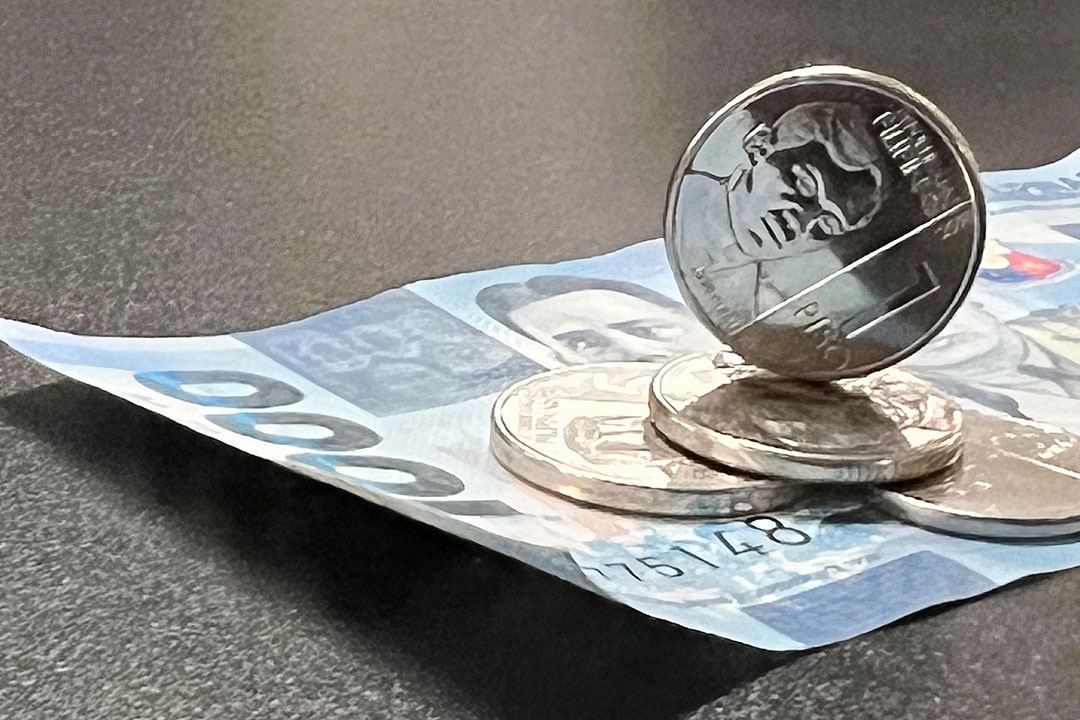 BW FILE PHOTO
BW FILE PHOTOTHE PESO fell against the dollar on Monday as market sentiment turned cautious ahead of the US deadline for finalizing trade deals with its partners.
“The market closed higher amid revived trade tensions regarding tariff jitters. Trump is looking to impose tariffs on BRICS countries,” a trader said by telephone.
It closed at P56.685 versus the dollar, down by 28.5 centavos from its P56.40 finish on Friday, based on Bankers Association of the Philippines data posted on its website.
The peso opened at P56.48 and traded between P56.46 and P56.71 throughout the session. Trading volume eased to $1.53 billion from $1.62 billion on Friday.
The peso’s drop was largely driven by Trump’s threats to implement an additional 10% tariff on nations aligning with the policies of the BRICS (Brazil, Russia, India, China, South Africa, Egypt, Ethiopia, Indonesia, Iran and the United Arab Emirates), Michael L. Ricafort, chief economist at Rizal Commercial Banking Corp., said in a Viber message.
The warning came just days before the original July 9 deadline for trade deals tied to the US reciprocal tariff policy.
Most US trade partners were expected to face significantly higher duties once the 90-day moratorium on the so-called “Liberation Day” tariffs ends on Wednesday. But Trump said on Sunday the new rates would take effect starting Aug. 1, according to a Reuters report.
He added that while some trade deals were close to being finalized, a dozen countries would receive letters detailing higher tariffs.
So far, only Britain, China, and Vietnam have reached any form of agreement with the US under the new trade framework.
For Tuesday, the trader sees the peso moving between P56.50 and P56.90 a dollar, while Mr. Ricafort expects it to range from P56.60 to P56.80.
The US dollar wobbled close to multi-year lows against major currency peers on Monday, with traders alert for any trade-related headlines in the countdown to President Donald Mr. Trump’s tariff deadline.
The tariff uncertainty weighed in particular on the risk-sensitive Australian and New Zealand dollars, ahead of monetary policy decisions in both countries in the coming two days.
“Market volatility appears inevitable when the pause officially ends and new tariff levels are announced,” James Kniveton, a senior corporate FX dealer at Convera, wrote in a client note.
At the same time, “the impact may prove more muted this time,” he said. “Unlike previous announcements where tariff levels exceeded expectations, current proposals are largely anticipated. Moreover, markets appear to be pricing in continued deadline extensions.”
Options data also reflected that currency markets were pricing in limited volatility resurgence ahead of the tariff deadline on expectations that there could be further extensions.
The dollar was flat at 0.7959 Swiss franc on Monday, edging back towards the July 1 low of 0.7869 franc, a level not seen since January 2015.
The euro slipped 0.3% to $1.1750, while the dollar firmed 0.38% to 145.15 yen, reversing an earlier decline.
Despite multiple rounds of negotiations, progress on agreements with Japan and the European Union has been slow, and markets are concerned that Tokyo and Brussels might not be able to secure deals with Washington ahead of the deadline.
The dollar index, which measures the currency against six major counterparts, edged up 0.26% to 97.223, but was close to last week’s nearly 3-1/2-year trough of 96.373.
The sell-off in the currency this year has been a result of investors questioning the safe-haven status of the greenback and reassessing earlier expectations that the US could be spared in the event of a global economic slowdown. — Aaron Michael C. Sy with Reuters

 11 hours ago
1
11 hours ago
1














 English (US) ·
English (US) ·